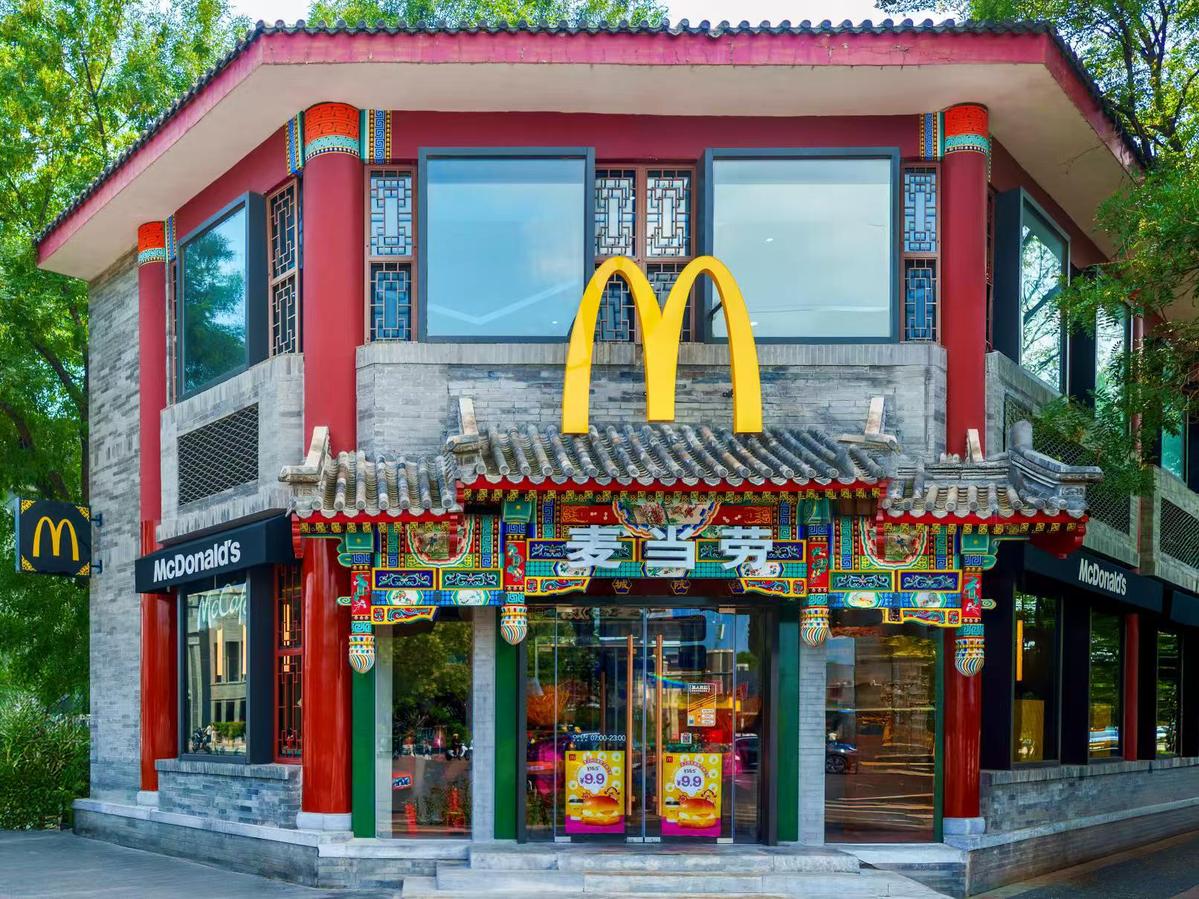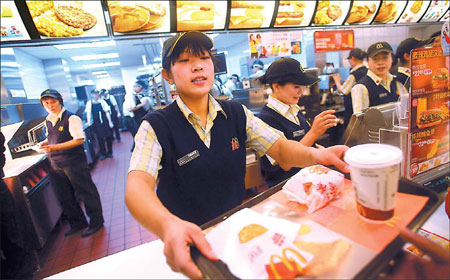McDonald’s China is pressing ahead with its ambitious goal of opening 1,000 new outlets annually, aiming to reach 10,000 stores nationwide by 2028. According to CEO Phyllis Cheung, this expansion is being driven by a strong focus on innovation, digital transformation, and deep localization.

McDonald’s China opens a new restaurant in Beijing in July.
The fast-food giant recently released a report to commemorate the eighth anniversary of its transition to a developmental licensee model under the “Jin Gong Men” (golden arches) banner. Since its acquisition by a CITIC Capital-led consortium in 2017, McDonald’s China has grown rapidly, now operating more than 7,100 outlets across 280 cities — over three times its 2017 footprint — and welcoming more than 1.3 billion customer visits annually.

Phyllis Cheung, CEO of McDonald’s China.
Cheung attributes this rapid growth to the Jin Gong Men model, which combines global brand strength with local ownership and agility. “This model allows us to react swiftly to market trends, drive meaningful innovation, and scale our impact across food, sustainability, talent, and community,” she said.
With a fully localized leadership team, McDonald’s China has been able to make autonomous decisions and innovate at speed. Signature offerings like the spicy menu series and the CUBE-style restaurant concept originated in China and are now being considered for global rollout. “Our advantage lies in our Chinese team and Chinese speed,” said Cheung, noting that local suppliers are producing at standards high enough for potential global distribution.

Cheung reaffirmed the brand’s long-term confidence in the Chinese market, adding that McDonald’s is opening two to three outlets daily. By the end of 2025, the company aims to enter the Ningxia Hui Autonomous Region and Qinghai Province, completing its presence across all provincial-level administrative regions in mainland China.
To further boost its presence, the company plans to deepen its reach into third- and fourth-tier cities, adapting to an evolving consumer base that prioritizes affordability and value. One such offering is the “Big Bite Meal” priced at just 22.9 yuan (US$3.18), designed to appeal to budget-conscious customers.
A robust and predominantly local supply chain — with over 90% of ingredients sourced within China — supports McDonald’s pricing strategy and product consistency. Over the past five years, the company and its partners have invested more than 12 billion yuan to develop and expand this ecosystem.

Innovation extends well beyond the menu. McDonald’s continuously adapts to changing local tastes with items like a 9.9-yuan breakfast combo and a high-protein beef burger for fitness enthusiasts. Digitally, the brand has transformed customer interactions, with nearly 90% of orders now placed through mobile apps or self-order kiosks. More than 6,000 outlets are equipped with smart lockers for seamless, contactless pickup via QR codes.
“We’re not just digitizing operations,” said Cheung. “We’re giving customers greater flexibility and control over their ordering experience.”
The company is also testing voice-activated drive-thrus tailored for drivers of new energy vehicles, a nod to evolving mobility and lifestyle trends in China.
Listening to customers remains central to the brand’s strategy. McDonald’s China monitors more than 20,000 social media posts daily related to the brand and regularly conducts focus groups to refine its offerings.
“Our goal isn’t just to grow in China,” said Cheung. “We want to co-create with Chinese consumers and grow together.”






